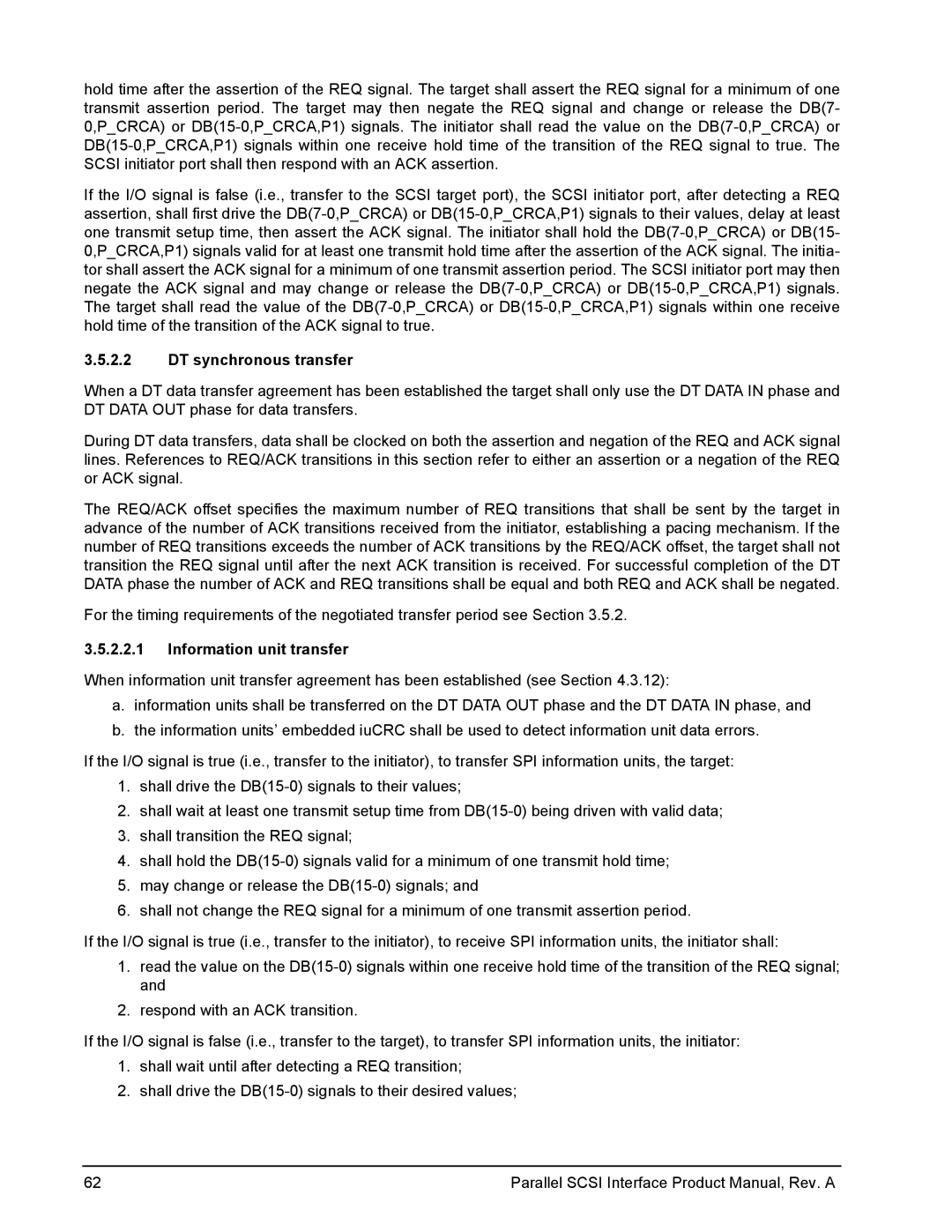hold time after the assertion of the REQ signal. The target shall assert the REQ signal for a minimum of one transmit assertion period. The target may then negate the REQ signal and change or release the DB(7- 0,P_CRCA) or
If the I/O signal is false (i.e., transfer to the SCSI target port), the SCSI initiator port, after detecting a REQ assertion, shall first drive the
3.5.2.2DT synchronous transfer
When a DT data transfer agreement has been established the target shall only use the DT DATA IN phase and DT DATA OUT phase for data transfers.
During DT data transfers, data shall be clocked on both the assertion and negation of the REQ and ACK signal lines. References to REQ/ACK transitions in this section refer to either an assertion or a negation of the REQ or ACK signal.
The REQ/ACK offset specifies the maximum number of REQ transitions that shall be sent by the target in advance of the number of ACK transitions received from the initiator, establishing a pacing mechanism. If the number of REQ transitions exceeds the number of ACK transitions by the REQ/ACK offset, the target shall not transition the REQ signal until after the next ACK transition is received. For successful completion of the DT DATA phase the number of ACK and REQ transitions shall be equal and both REQ and ACK shall be negated.
For the timing requirements of the negotiated transfer period see Section 3.5.2.
3.5.2.2.1Information unit transfer
When information unit transfer agreement has been established (see Section 4.3.12):
a.information units shall be transferred on the DT DATA OUT phase and the DT DATA IN phase, and
b.the information units’ embedded iuCRC shall be used to detect information unit data errors.
If the I/O signal is true (i.e., transfer to the initiator), to transfer SPI information units, the target:
1.shall drive the
2.shall wait at least one transmit setup time from
3.shall transition the REQ signal;
4.shall hold the
5.may change or release the
6.shall not change the REQ signal for a minimum of one transmit assertion period.
If the I/O signal is true (i.e., transfer to the initiator), to receive SPI information units, the initiator shall:
1.read the value on the
2.respond with an ACK transition.
If the I/O signal is false (i.e., transfer to the target), to transfer SPI information units, the initiator:
1.shall wait until after detecting a REQ transition;
2.shall drive the
62 | Parallel SCSI Interface Product Manual, Rev. A |
